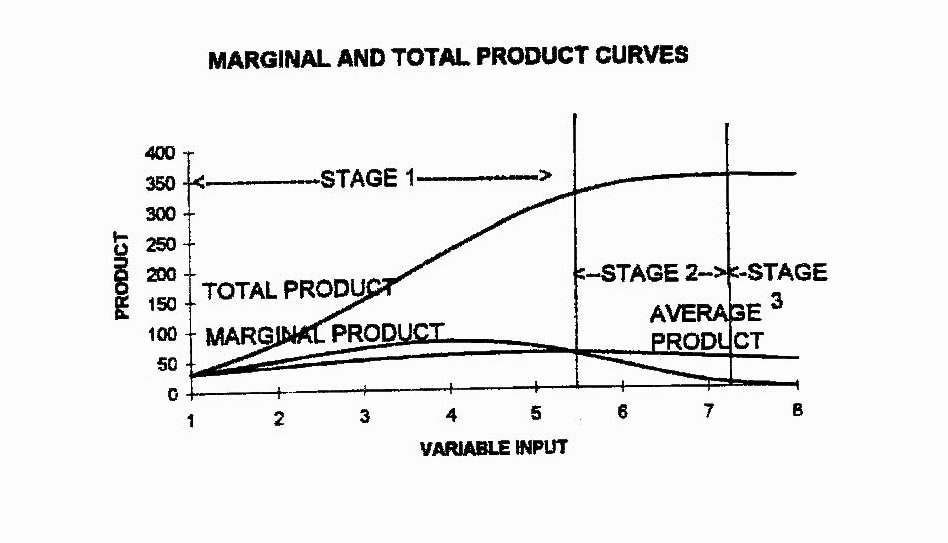
| DIMINISHING MARGINAL PRODUCT | |||
| HEIGHT (FLOORS) | TOTAL NET INCOME | AVERAGE PRODUCT | MARGINAL PRODUCT |
| 1 | 30 000 | 30 000 | 30 000 |
| 2 | 80 000 | 40 000 | 50 000 |
| 3 | 150 000 | 50 000 | 70 000 |
| 4 | 230 000 | 57 500 | 80 000 |
| 5 | 300 000 | 60 000 | 70 000 |
| 6 | 340 000 | 56 666 | 40 000 |
| 7 | 350 000 | 50 000 | 10 000 |
| 8 | 350 000 | 43 750 | 0 |

